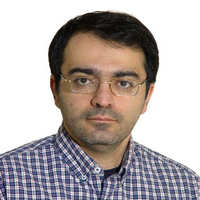Modeling and Solving the Hazmat Routing Problem under Network Interdiction with Information Asymmetry
Author(s):
Abstract:
In this paper, we consider the problem of hazardous material distribution where the distributer chooses the routes on the network, and a regulatory agency controls the behavior of the distributer to traverse the specified routes. In these circumstances, the distributer wants to select some routes to minimize the total distributing costs. Most of the time, this occurs due to selecting risky arcs in which more individuals are exposed to risk. To prevent this and increase the capability to deal with the risk of hazardous material transportation through roads, the regulatory agency obliges carriers to traverse through the most secure arcs, though imposing more distribution costs.
In reality, two decision makers may have different perceptions or asymmetric information about the network. To apply network interdiction models for real situations, we introduce the information asymmetry for these types of vehicle routing network interdiction problems and investigate its benefits and risks. For this purpose, a bi-level programming model is proposed and two bi-level meta-heuristics are suggested to solve this Stachelberg interdictor-evader game. The computational results showed that the developed co-evolutionary meta-heuristic algorithm could be more effective and more rational than the developed Bi-GA for these problems.
In reality, two decision makers may have different perceptions or asymmetric information about the network. To apply network interdiction models for real situations, we introduce the information asymmetry for these types of vehicle routing network interdiction problems and investigate its benefits and risks. For this purpose, a bi-level programming model is proposed and two bi-level meta-heuristics are suggested to solve this Stachelberg interdictor-evader game. The computational results showed that the developed co-evolutionary meta-heuristic algorithm could be more effective and more rational than the developed Bi-GA for these problems.
Keywords:
Language:
Persian
Published:
Journal of Transportation Engineering, Volume:9 Issue: 1, 2017
Pages:
17 to 36
https://www.magiran.com/p1738017
سامانه نویسندگان
مقالات دیگری از این نویسنده (گان)
-
Designing a Dynamic and Sustainable Cellular Manufacturing System by Considering the Amount of Energy Consumption and Manpower in Production Planning
Nader Ghanei, Gholam Reza Esmaeilian *,
Journal of Modeling in Engineering, -
A Novel Optimization Model for Pricing-based Energy Management in a Peer-to-Peer (P2P) Electricity Market
Maliheh Masoumi, *
Journal of sustainable Energy Systems,



